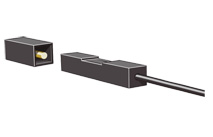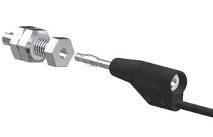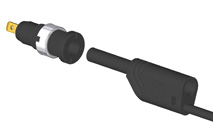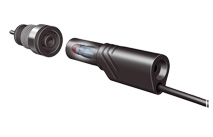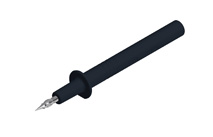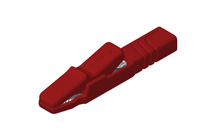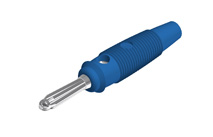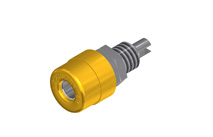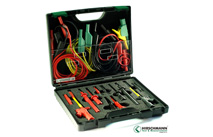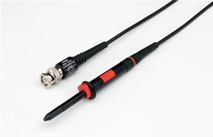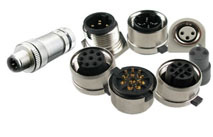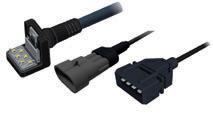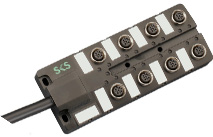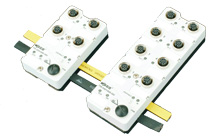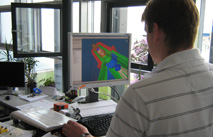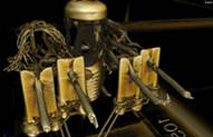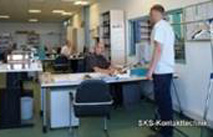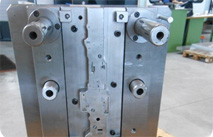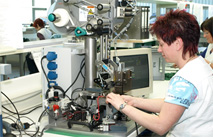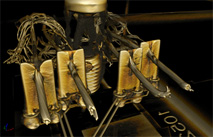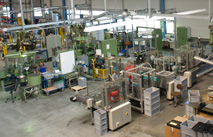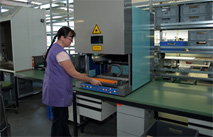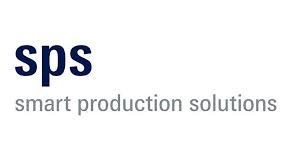Basic information
The multipart international standard IEC 61010 corresponds with the EN 61010 standard as well as the VDE regulation 0411.The aim of the standard IEC 61010 is to protect the user against the following dangers through suitable structures (e.g.):
- Dangerous electrical currents for the human body
- Electrical burns
- Mechanical dangers
- Excessively high temperatures
The provisions of IEC 61010 relate to reliable functioning, efficiency and other characteristics of the devices, as well as the maintenance of the same shall be applied to the following devices:
- Measuring and testing devices
- Control and regulation devices
- Laboratory devices
- Measuring accessories for the above mentioned devices
What does IEC 61010 mean for SKS Test & Measurement products?
As a leading supplier of electro-mechanical components, SKS offers products and measurement accessories according to IEC 61010. Our products are designed for voltages from 30 VAC / 60 VDC to 1000 V AC/DC. Voltages above 30 VAC / 60 VDC may lead to dangerous currents for the human body. For this, SKS offers the 2mm & 4mm safety system. If used correctly, a large range of the products ensures optimum safety up to 1,000 V. The products are designed, tested and marked according to IEC 61010. These products bear a text indicating the permissible rated voltage and measurement category. SKS products meet international safety standards and are recognized all over the world as reliable and high-quality products.
Safety instructions
The rated values stated by SKS are only valid, if the user applies and/or installs the measurement accessories according to the regulations. We also want to note that the safety eventually is the responsibility of the user of Test & Measurement products, as the qualified measurement accessory will be actually used for his purposes according to regulations.
Technical details
We reserve the right to make changes with regard to technical enhancements and for higher safety without prior notice. All the details contained in the catalogue are not guaranteed.
#
A
The air clearance is the directly measured distance between two conducting parts. This clearance acts as an insulator and should be dimensioned according to IEC 61010.
B
The baseline insulation is the insulation of parts under voltage, the failure of which can lead to dangerous currents for the human body.
C
The CE certification mark is a certificate that certifies conformity with the directives and standards. All goods and products that are brought into circulation within Europe should conform to the European Directives. For devices, these are especially the Low Voltage Directive (2014/35/EU) and the EMV Directive (2014/30/EU), as well as EN 61010. According to these statutory standards, all products of 2mm & 4mm Safety System are issued with the CE certification mark. For installation of built-in plugs and sockets, the user has to consider also the relevant European Directives.
The conductor structure is defined by the specifications of the conductor (see product description). The number of individual copper wires and their structure decide the flexibility of the conductor. The test leads from SKS belong to the category “highly flexible”.
The contact material is the base material. This can be refined further. (See contact surface material.)
Contact protection is the protection of measurement media against accidental contact. Contact protection depends on the voltage to be measured, the overvoltage to be expected (Measurement Category), the environmental conditions (Degree of Contamination) as well as the insulating material. All products of the 2mm & 4mm safety system have either double insulation or reinforced insulation. This enables optimum contact protection and maximum safety. All products of the SKS 2mm & 4mm safety system are designed for a voltage of 1000 V, unless otherwise specified. It is possible, by defining other ambient conditions, to obtain a different measurement voltage. SKS would be happy to inform you about the safe use of higher voltages.
Contact resistance is the resistance measured between the connections of connected contact parts. It consists of resistivity and contactcircuit resistance. The contact resistance is controlled according to DIN EN 60512.
Contact surface material is the material on the surface of the electrical contact. Special nickel or gold coating is used here, with optimum electrical and mechanical properties.
The creepage distance is the shortest distance along an insulating material surface between two conducting parts. All peaks and valleys on the insulating body will be taken into account. Creepage distances are defined in the IEC 61010 for all products and are strictly observed by SKS.
D
According to the derating curve (load reduction curve according to DIN EN 60512-5-2), the operating current at higher ambient temperature is to be reduced. The current loading capacity of measurement accessories is limited by the thermal load-bearing capacity of the contact materials or insulating parts and through the valid upper limit temperature of measurement accessories according to IEC 61010. Therefore the derating curve applies as a function of environmental temperature to currents that may continuously pass through each contact element of the plugs, without exceeding the upper limit temperature. The derating curve describes the relation between currents, thereby caused increase of temperature (power loss on contact resistance) and environmental temperature of the measurement accessory. A linear coordinate system will be marked with current on the vertical axis and environmental temperature on the horizontal axis, which ends with the upper limit temperature of the measurement accessories. The valid upper limit temperature for measurement accessories is according to IEC 61010 as follows:
·Non metallic materials: 70°C
·Metallic materials: 55°C
The Degree of Contamination is the numeric designation of the degree of contamination that can exist in the environment. The standard IEC 61010 classifies the following three categories:
Degree of Contamination 1 allows no contamination or only a little contamination, which should not be conductive.
Degree of Contamination 2 is a light, normal level of contamination that may become conductive due to moisture condensation. This contamination may result due to sweat from human hands. For this reason, the Degree of Contamination 2 is applied for hand-held measurement accessories. All Test & Measurement products are desi-gned for Degree of Contamination 2.
Degree of Contamination 3 is contamination that is conductive or which becomes conductive due to moisture condensation.
Double insulation consists of basic insulation and an additional insulation.
E
F
G
The gripping area is the area in which the user can touch a measuring medium during operation without being exposed to dangerous currents for the human body. It is clearly marked and constructional separated from dangerous area under voltage. If used properly the measuring media should only be touched on the designated gripping areas. Wrongful use or the use of damaged products will cause high, crucial safety risks.
H
The electromagnetic frequency spectrum is divided into different sections in technology. This classification indicates the area above the acoustic waves between 30 kHz and 300 MHz as high frequency (HF) and the frequency range between 300 MHz and 300 GHZ as electromagnetic waves. The SKS products of the category "HF measuring technique" can also partly be used for measurements in the area of electromagnetic waves.
I
The international standard IEC 61010 “Safety specifications for electrical measurement, control, regulation and laboratory devices” defines the protection of the user against dangerous currents to the human body and electrical burns. For measuring and testing accessories, the section IEC 61010-1 and IEC 61010-031 will be app-lied. The standards correspond to EN 61010-1 and EN 61010-031. All products of Hirschmann Test & Measurement range are designed according to this standard.
As far as insulation is concerned, a distinction is made between basic insulation and double or reinforced insulation. For handheld measuring accessories of safety system, the standard specifies double or reinforced insulation. This consists of the basic insulation, which ensures minimum protection against dangerous currents for the human body, and an additional insulation, which guarantees protection against dangerous currents for the human body when the basic insulation fails. SKS uses double or reinforced insulation for all products of the 2mm & 4mm safety system to protect the user.
J
K
L
M
In the Measurement Category, application fields are classified according to the potential risk for the user, since transient voltage surges may lead to danger to the user. In general the following applies: The higher the measurement category, the higher will be the safety requirements that apply to the product.
Measurement Category II (CAT II)
Measurement Category II is for devices that are connected to the mains or those that receive power via the mains, but are not a part of the installation. In these devices, there may be transient overvoltage due to switching processes (for example mainspowered entertainment electronic appliances, domestic appliances).
Measurement Category III (CAT III)
Measurement Category III is for voltages in the field of distribution installations and fixed installations (for example switches, socket outlets, general domestic installations).
Measurement Category IV (CAT IV)
Measurement Category IV is for voltages at the source of the installation (for example overhead lines, cable networks).
N
O
P
Q
R
The rated current is the current that can continuously pass through all the contact elements without the limit temperature being exceeded. The upper limit (rated current) is due to the selfheating and the environmental application temperature. Please consider the load reduction curve (see derating curve).
The rated voltage is the voltage at which products can be used safely, if used properly. The specified rated voltage always relates to the Degree of Contamination 2. To the rated voltage belongs also the declaration of Measurement Category.
The EC regulation 1907/2006 contains the registration, evaluation, authorization and also the restriction of chemical substances. For all Test and Measurement products SKS exclusively uses chemical materials that comply with EC regulation 1907/2006.
Reinforced insulation is an insulation that offers protection against dangerous currents for the human body. It can alternatively be used for double insulation (see insulation).
The EC directive 2011/65/EU controls the use of particular hazardous materials for Test & Measurement products. For all Test & Measurement products SKS exclusively uses materials that comply with EC directive 2011/65/EU.
S
All the measuring leads of the 2mm & 4mm safety system have a safety colour indicator. The cable insulation consists of two separated insulation layers. The first layer is directly installed on the conductor and it is white in all measuring leads (except of white ones > red colour indicator). In a subsequent manufacturing stage, a second insulation layer is applied in the respective cable colour. If the insulation is damaged while using the measuring lead, the first insulating layer becomes visible. For safety reasons, the lead should be immediately replaced with a new SKS measuring lead.
The Sliding Sleeve System has a slidable protective insulation to avoid short circuits and electric shocks in unmated state. It is not allowed to use this system for dangerous voltages during hand-held application. Adapter test leads for the connection to equipment that (still) cannot take fully insulated plugs are an exception. For this reason the Sliding Sleeve System is classified according to IEC 61010 without a rating measurement category.
T
Temperature range (environmental conditions)
The temperature range is the permissible range in which the pro-ducts may be used without damaging the materials.
Safety measuring leads according to IEC 61010 are crimped, soldered or welded and they are being provided with pull relief at the conductor as well as the conductor insulation. Therefore, the safety measuring leads are exceptionally robust and made to last.
The test voltage is the voltage at which SKS products are tested in the design and manufacturing stage, in order to ensure the insula-ting capacity and the dielectric strength under the specified conditions. The magnitude of the voltage depends on the application and is specified in the standards (for example IEC 61010). The testing voltage is a multiple of the operating voltage and it is met by all the products mentioned in the catalogue. In order to avoid confusion with the lower rating voltage, the test voltage is not separately indicated in the catalogue.
The transient voltage is the overvoltage that arises due to a switching process or lightning discharge. The transient voltages are laid down in the standards (for example IEC 61010) and depend on the ambient conditions and the location in the supply network at which the measurement is carried out.
U
V
The voltage details for the products mentioned in the catalog indicate the voltage range for which they can be used. SKS has designed the entire 2mm & 4mm safety system, unless otherwise specified, for 1,000V, Measurement Category III (CAT III) with Degree of Contamination 2. The largest range of measuring tasks in the higher voltage range is safely covered. SKS would be happy to inform you about the safe use of measuring devices at high voltages.




